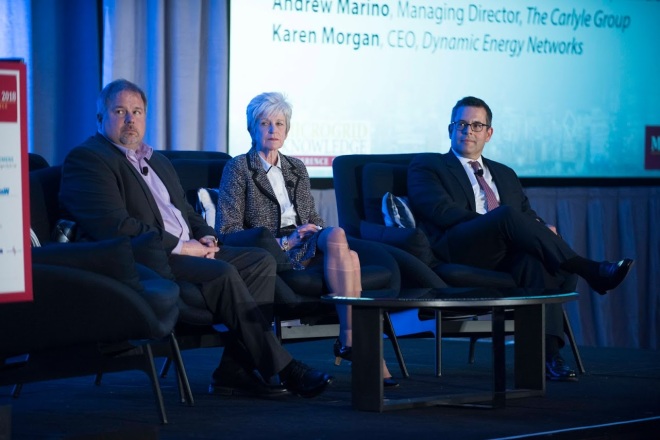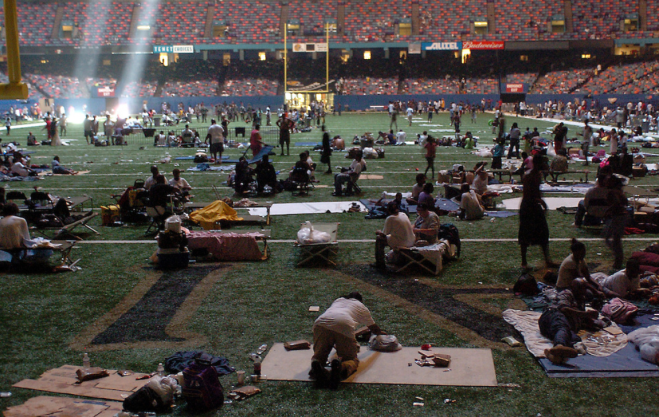Mark Davis is a member of two very exclusive clubs. He is one of about 3,200 people who have played in the NBA, and, with WDC Solar, he is one of an even smaller number of people who have started inner city solar companies. His dual goals? Put a dent in climate change and reduce urban unemployment.
GreenSportsBlog sat down with Mr. Davis to talk about his journey from being a rural Georgia farm boy to the NBA to installing solar panels on rooftops in the nation’s capital.
GreenSportsBlog: Mark, GreenSportsBlog is always on the lookout for eco-athletes so we are glad to have found you! How did you go from the NBA to building a solar company in Washington, D.C.?
Mark Davis: There were two main factors that may, on the surface, sound unrelated. First, my upbringing on a farm in Georgia in the ‘60s and ‘70s, and second, Barack Obama’s run for the White House in 2008. Let me explain. Growing up on that farm made me acutely aware of the environment, how it works, and how important it is to do what I can to protect it. Now, fast forward to 2008. I had been retired from pro basketball for about 10 years by then. I had been working in real estate and software businesses, but was looking for something else. I was very excited about Senator Obama’s presidential campaign and was particularly inspired by his advocacy of renewables as part of his overall clean energy plan.
GSB: What did that inspiration lead to?
Mark: I started to ask about and study the clean energy markets. Talked to a friend from Nepal who was involved with the hydropower business over there. I traveled to Northern California to see the solar market up close and took a course about the solar business. I created a business plan and, even more importantly, found the right business climate in which to launch a solar company to give myself the best chance of success.
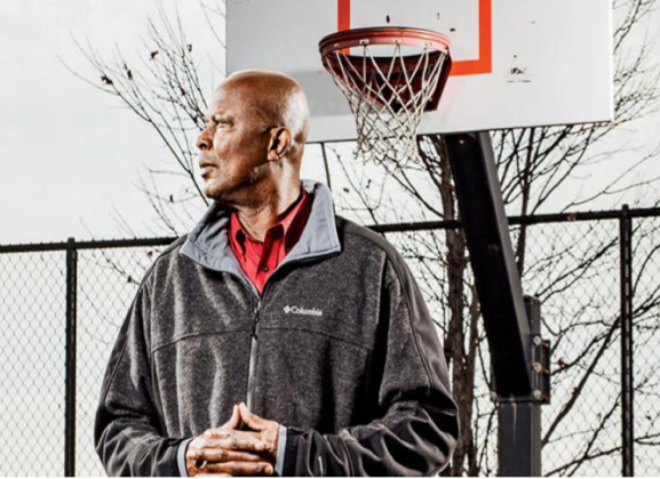
Mark Davis, founder of WDC Solar (Photo credit: Jonathan Timmes, Sierra Magazine)
GSB: What do you mean by “right business climate”?
Mark: There were some aspects of a good business climate for solar when President Obama took office in 2009. For example, the federal stimulus program included funding for solar. But that wasn’t enough. And, at that time, incentives were not in place at the local, Washington D.C. level for solar and other renewables…
GSB: …and the prices for solar panels were much higher then than they are now.
Mark: …Yes, by a wide margin. We weren’t anywhere close to grid parity at that time. So what did we local D.C. installers do? The birth of a new industry doesn’t just happen. We did our homework and found that rebates and other incentives would be needed to allow solar to compete on a price basis with fossil fuel generated power provided by the utility. We lobbied local D.C. politicians and civic groups to promote legislation that put incentives in place that eliminated the boom-bust cycles that were the hallmark of the solar industry back then. Eventually, the city council and mayor joined our side.
GSB: Sounds like a lot of work!
Mark: It took a ton of homework and legwork, but it had to be done.
GSB: What happened next?
Mark: Once the legislation was in place and we were confident there would be a market for solar in D.C., we launched WDC Solar. But our approach to sustainability was not purely environmental. We also established the company to provide sustainable employment for young men and women who desperately needed it.
GSB: How did you do that?
Mark: We launched a training program that would teach young folks to be solar practitioners, which provided a pathway to employment at no cost to them.
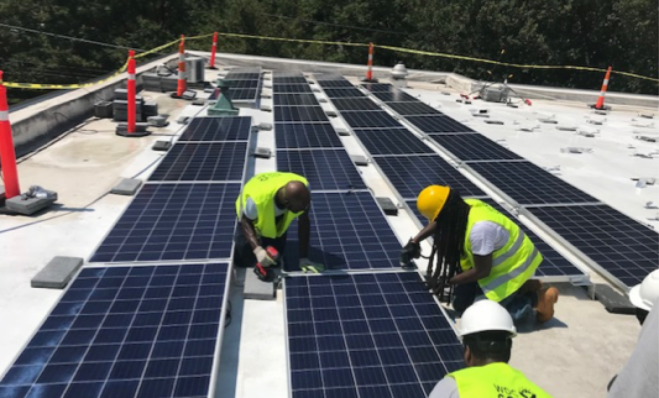
WDC Solar installation trainees learning their trade (Photo credit: WDC Solar)
GSB: Incredible! How did you fund this? Through angel investors and/or venture capital?
Mark: We bootstrapped it.
GSB: Meaning that you invested your own money for those unfamiliar to the startup scene…
Mark: That’s right. That’s how we were able to get the solar training program up and running.
GSB: Impressive. And then how did you get solar panels installed on people’s homes?
Mark: Well, at first, back in 2012-13, we worked with the DC Sustainable Energy Utility to transfer the solar rebates, tax credits and solar renewable energy credits (SRECs) to private equity investors, so solar panels could be installed on the roofs at no cost to low-income homeowners. The low-income families owned the energy produced by the panels. They had to pay for any electricity they used over and above what the panels produced which became a major incentive for the homeowners to become more energy efficient.
GSB: How did that work?
Mark: Very well in most cases. I’ll never forget it when one of my customers told me he had a monthly electric bill of 56 cents!
GSB: 56 cents???
Mark: He couldn’t believe it. I couldn’t believe it! I’ll tell you, our customers have been just so thankful; it’s been a blessing to be able to help people. Another great outgrowth of our business was that many of our early trainees used that experience to get better jobs, thanks to a program with the District’s Department of Employment Services.
GSB: Talk about a blessing…So is WDC Solar only involved with residential customers?
Mark: We started with small-scale residential jobs; I’m talking 3-4 kW. Then, we got involved with bigger jobs when the District put out a request for proposal (RFP) to put solar on public school roofs. The RFP was for installations totaling 12 megawatts. We were fortunate to work on a portion of that portfolio. We also were involved with some commercial and utility-scale jobs, thanks to a partnership with Standard Solar. Our “sweet spot”, however, still remains low-income residential at this point.
GSB: Have you expanded beyond Washington, DC?
Mark: It’s been slow because in places like Maryland, the SREC prices aren’t so great. But with the price of solar panels coming down, the SRECS are becoming less important and that makes it is easier for us to go to other jurisdictions. Heck, when you and I first spoke, I was on the roof at Chevy Chase Baptist Church, just across the street from Maryland, helping to install a 100 kW system. Currently, we’re looking at opportunities in Atlanta and Chicago, but both are a bit complicated right now. One thing is certain: We only go into a market where we can create jobs for the local community.
GSB: I love the “solar plus jobs” business model. It just makes so much sense! Has WDC Solar worked on any sports venues?
Mark: We partnered with New Columbia Solar to provide installers to the Audi Field project, the brand new home of D.C. United in Major League Soccer (MLS).
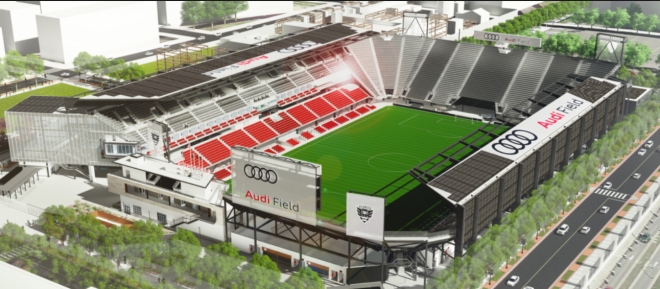
Artist’s rendering of the solar installation on the roof of Audi Field, the recently-opened home of DC United (Credit: New Columbia Solar)
GSB: I’ve heard great things about Audi Field; I need to get there soon. Sticking with sports GSB is constantly on the lookout for eco-athletes like yourself who could have a great effect on fans. Why haven’t we seen more eco-athletes and what can we do to change that?
Mark: That’s a complicated question. I think a big part of it is that it is so difficult, from a communications perspective, for many folks to connect extreme weather to the global, long-term climate change problem. The perception among many is that climate change is coming on slowly, that it is not a problem for today and that solutions are a century or more away. On the other hand, so the argument goes, there are clear and present dangers right now like police brutality against people of color and the opioid crisis that need more attention.
GSB: I couldn’t have said it better myself. So if that’s the case, how do we fight back?
Mark: Athletes and ex-athletes who work with people of color — WE have to be the agents of change! We need athletes to help us emphasize the massive economic benefits that will come to those who help solve the many climate-related crises. I see it starting to occur here — installing solar on your roof is definitely a statement of self-empowerment.
GSB: So which athletes can we get? How about LeBron James?? Nothing like aiming high, I always say!
Mark: LeBron James will be tough right out of the box. I think we should go for some great elder statesmen of sports who are also involved in renewables. In particular, I’m thinking of Bernard King, member of the Naismith Basketball Hall of Fame, who has worked on climate change issues and in the solar business. Also Dusty Baker, the Washington Nationals’ manager has a solar company. Another idea I have is to create a celebrity golf tournament dedicated to raising money to combat the climate crisis. Basketball players and other pro athletes love golf and this way we can highlight and communicate the urgency of solving the climate crisis in a collegial atmosphere. What do you think?
GSB: LOVE IT! Forget LeBron; let’s get serious and line up NBA superstar and scratch golfer and Brita water filter endorser Steph Curry in the mix! We must make this happen.
Mark: Hey, we’re in the “let’s make the impossible happen business”. I’m in!

Mark Davis with President Obama at the 2016 State of the Union address (Photo credit: The White House)

